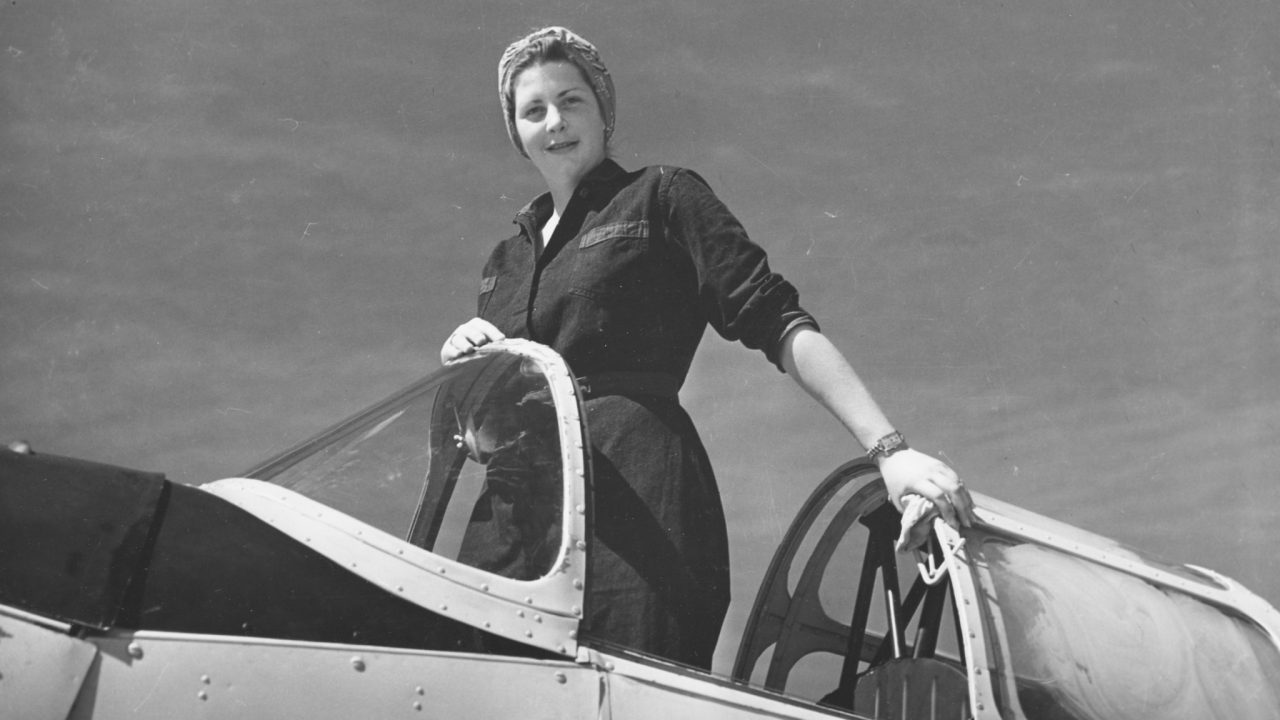
The NFB Shines a Light on Women in World War 2 | Curator’s Perspective
The NFB Shines a Light on Women in World War 2 | Curator’s Perspective
The role of women during the Second World War was highlighted in several high-profile NFB documentaries made during the conflict, and as Remembrance Day is upon us, I thought I’d take a look back at some of these important films. The fact that these docs were part of the two most prestigious series of the day is quite unusual and needs to be celebrated. Several of these films were even directed by women. This shows that the NFB was indeed a pioneer in helping women work towards equality. Many of these documentaries have long since been forgotten, but I hope to bring them back into the spotlight, where they rightfully belong.
When World War 2 broke out, the Canadian government turned to the National Film Board to produce films that would give citizens a unique Canadian view of the war. NFB Film Commissioner John Grierson envisaged a series of short theatrical documentaries that would be released on a monthly basis. Thus the Canada Carries On series was born, with films distributed in Canadian theatres as of April 1940. Later, The World in Action series was produced to cover the war from a broader, international point of view.
Grierson had decided on six major themes for these films:
1) Get Canadians to focus their collective energies.
2) Help them find purpose in their activities.
3) Shed light on the strategy of war in a Canadian context.
4) Foster respect for women for their wartime roles.
5) Unite Canadians in the collective purpose of crushing tyranny and fascism.
6) Help prepare to usher in a postwar world.
One of the first films to deal with theme number four was Women Are Warriors. Released on August 26, 1942, as part of Canada Carries On, the film highlights the work of women in Great Britain and the Soviet Union. It tells of Soviet women accorded rights equal to those of men, in all fields. It also tells of British women operating anti-aircraft guns and working in all aspects of the war effort. The film then switches to Canada, showing women now working in factories, assembling bomber aircraft and manufacturing bombs. Directed by Jane Marsh, Women Are Warriors was the first of only three war propaganda films made by a woman, about women, and speaking directly to women.
Women Are Warriors, Jane Marsh, provided by the National Film Board of Canada
In February 1943, the NFB released Wings on Her Shoulder, also directed by Marsh. This one was part of The World in Action and dealt with the nine-thousand-strong women’s division of the Royal Canadian Air Force. The film shows young women being trained in all kinds of roles. Modern-day audiences will likely gnash their teeth when it’s stated that women are there to take over other duties so that men will be available to fly the aircraft, but Marsh still manages to evoke a feeling of pride in the work the women are doing.
Wings on Her Shoulder, Jane Marsh, provided by the National Film Board of Canada
Proudly She Marches, also directed by Marsh, was released to Canadian theatres in September 1943 as part of Canada Carries On. Marsh starts the film with a ridiculous voiceover (read by a man) about how women are “the flower and ornament of the human race,” beautiful and able to use their intelligence to further enhance their beauty. This is accompanied by several shots of women in leisure poses. Marsh has one of the protagonists turn off the radio and declare that this is all hokum, and that thousands of women in Canada have already joined the Armed Forces to do their part in the war effort. We then meet several women who did just that, including a schoolteacher and a photographer who both joined the RCAF. We’re shown the many important jobs that the women are training for. The documentary is basically an 18-minute recruitment film for the Armed Forces, and there’s a great deal of emphasis on all the great sports and leisure activities that await those who join! Marsh resigned from the NFB shortly after the production of this film, as Grierson refused to name her to the position of producer of the Canada Carries On series.
Proudly She Marches , Jane Marsh, provided by the National Film Board of Canada
The short clip Proudest Girl in the World was produced by the NFB for the National Campaign Committee in 1944. It’s essentially a two-minute musical recruitment film, with music and lyrics written by Wayne and Shuster!
Proudest Girl in the World, Julian Roffman, provided by the National Film Board of Canada
To the Ladies, released as part of Canada Carries On after the war in January 1946, is a sincere tribute to the incredible work done by women during the war. In it, we are told about the 45,000 women who spent time in the various services of the Armed Forces. The film even talks about equality of pay between men and women—surprising, as this predates the women’s movement by 20 years. Overall, a genuine tribute to the women who served our country during this war. No director is credited, but the film includes music by Eldon Rathburn, who was just starting his career at the NFB and would go on to compose the scores of more than 300 films.
To the Ladies, , provided by the National Film Board of Canada
Twenty-first-century audiences will certainly find fault in all these films. They were made in a very different era and have to be seen in the context of that era. I believe the acknowledgment of the role women played during the war was sincere in all these films, and they remain a fascinating look at that period in our history.
To all the women who served, thank you for your service.



